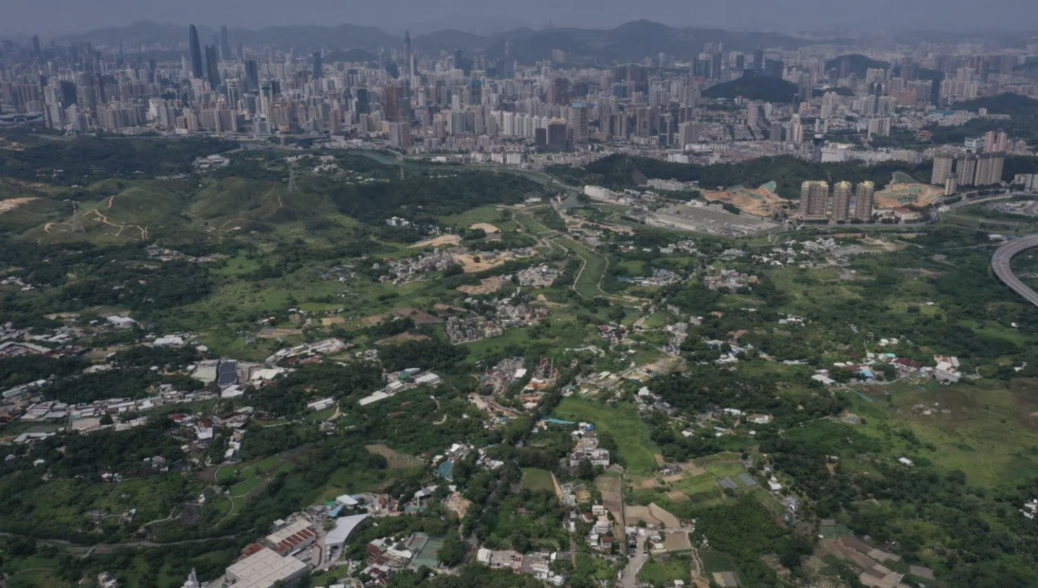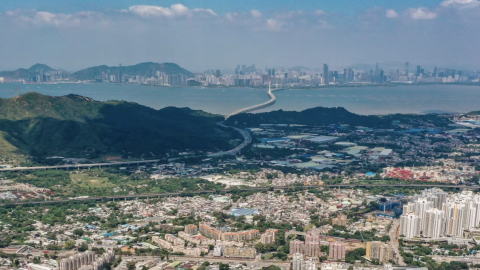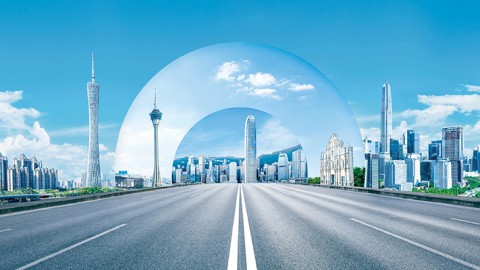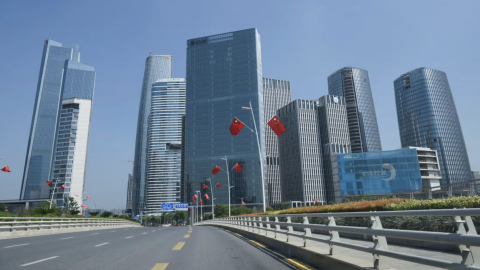Northern Metropolis could be Hong Kong’s last chance to not ‘miss the boat’ by Regina Ip
- The Northern Metropolis offers far more promise than the Lantau Tomorrow Vision, which smacks of a Hong Kong-centric, inward-looking mindset
- To seize this chance, the government needs a concrete plan and a new developmental approach to bypass complex planning regulations
Chief Executive Carrie Lam Cheng Yuet-ngor’s policy address on October 6, which was by far her most ambitious and visionary, could be her last if she does not win a second term.
Will the Northern Metropolis, the centrepiece of her address, help her get a second act? More importantly, will it give Hong Kong a chance to regain its mojo and reinvigorate its growth?
Lam’s political future aside, the Northern Metropolis is likely to have a major transformational impact on Hong Kong’s future if executed properly, much more so than the Lantau Tomorrow Vision that was unveiled in Lam’s 2018 address.
The Lantau project is marketed as adding 1,700 hectares of reclaimed land in central waters to land-hungry Hong Kong. It would provide a comprehensive air, road and rail network connecting New Territories West with Hong Kong Island and enable Hong Kong’s prime business districts in Central to expand onto nearby reclaimed areas.
Yet, as pundits have pointed out, large-scale reclamation raises serious environmental concerns. In terms of location, those central waters are far from ideal for the purpose of integrating with the Greater Bay Area.
The circular design concept in the Lantau project, linking New Territories West with Hong Kong Island, suggests planners remain stuck in a Hong Kong-centric, inward-looking mindset. It envisages the city centre as the chief engine of the city’s growth and, as such, misses the key planning concept behind Greater Bay Area development.
The Greater Bay Area comprises nine leading cities in Guangdong, plus Hong Kong and Macau. Together, they encompass a land area of around 56,000 square kilometres, a population of more than 86 million and a GDP of about US$1.7 trillion, plus several of the world’s busiest ports and airports.
It includes Shenzhen, China’s tech powerhouse and symbol of innovation, and Hong Kong, China’s global financial centre. The Greater Bay Area is, beyond any shadow of a doubt, the most open and dynamically growing region of China.
Since China’s reform and opening up in 1979, its leaders have wanted to leverage the geographical location of Guangdong’s coastal cities, their strong external links and openness to launch market reform experiments and jump-start economic growth. The Northern Metropolis is the latest manifestation of this planning idea.
As has been pointed out, the border between Hong Kong and Shenzhen is an artificial one. Whether in terms of history, geography, people connections, economic development or transport links, the northern part of Hong Kong and Shenzhen are part of an organic whole.
The “Twin Cities, Three Circles” concept is not just about promoting complementarity. It is about combining the economic strengths and chemistry of the two cities to produce a new, even more vibrant economic zone.
Execution will be key to the success of this strategy. At present, it lacks a concrete timeline and road map to completion. It has also raised questions about the ability to finance it and whether existing laws, intricate planning procedures and supply bottlenecks in many areas would inhibit the government from pulling off this feat.
The development plan involves upgrading several existing projects and linking them to Shenzhen to enhance their developmental potential. The existing Hung Shui Kiu/Ha Tsuen New Development Area will be upgraded and linked to the enlarged Qianhai economic zone to form the Shenzhen Bay Quality Development Circle.
The Hong Kong-Shenzhen Innovation and Technology Park, which has been under planning for years, will be renamed San Tin Technopole and enlarged to form a Hong Kong-Shenzhen Close Interaction Circle. The third circle on the northeastern side, the Mirs Bay/Yan Chau Tong Eco-Recreation/Tourism Circle, will focus on conservation, tourism and sustainable development.
The development of all three circles requires a new strategy. There is a slim chance of success if the existing labyrinthine planning and development procedures under a plethora of complex laws are followed.
If the government is truly determined to achieve a breakthrough, it needs to adopt a new developmental approach by enacting legislation that overrides existing relevant statutes, to introduce streamlined procedures for planning, consultation, environmental impact assessment and land resumption.
As the new legislature is unlikely to be stymied by filibusters, the government should aim to enact such an overriding piece of legislation – similar to the Protection of the Harbour Ordinance of June 1997 – within the next year to start the ball rolling.
Financing for this mega project can be resolved by making greater use of public-private partnerships, which have served Hong Kong well. A special purpose vehicle or some other corporate structure could be devised to move the project forward. The corporation can be floated so that the public benefits from the probable handsome returns.
The talent shortage within the government and many public corporations is well-known. The government should make greater use of private-sector experience and expertise in fundraising, project design and management to alleviate its talent crunch.
Above all, investment in the Northern Metropolis should be open to all qualified investors interested in partaking in this groundbreaking project, whether mainland, local or foreign.
It will be another milestone in Hong Kong’s history of development, injecting new impetus into the city’s growth. It will also broaden its economic structure beyond the trade-related, financial and professional services, which have mushroomed along both sides of the harbour, and take Hong Kong to the next level. Hong Kong has much to lose if we, as President Xi Jinping said in 2017, “miss the boat”.
Regina Ip Lau Suk-yee is a lawmaker and chairwoman of the New People’s Party
Regina Ip served as Hong Kong’s secretary for security from 1998 to 2003. After three years’ studies in the US, she returned to Hong Kong with a view to improving Hong Kong’s governance. She is now chairperson of New People’s Party and a legislator elected on Hong Kong Island.







